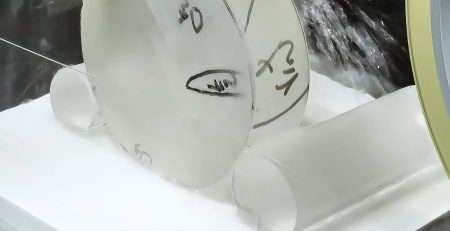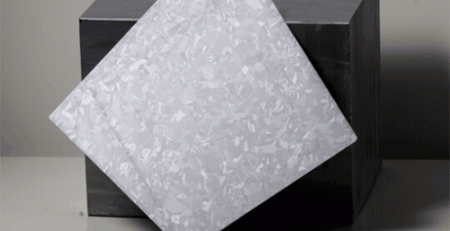Revolutionäre industrielle Materialschneidverfahren
Effiziente Materialschneidverfahren spielen in verschiedenen Branchen eine zentrale Rolle, Dies wirkt sich erheblich auf Produktivität und Qualität aus. In diesem Blogbeitrag, we delve into the evolution of cutting technologies and their transformative effects on industrial processes.
aditional Cutting Methods:
Traditional cutting methods have served as the foundational techniques in material processing for generations. Manual cutting, involving hands-on tools like saws and shears, reflects the artisanal approach to shaping materials.
While effective, these methods often fall short in precision, leading to irregular cuts and material wastage. The reliance on human skill and physical exertion limits the speed and consistency of the cutting process.
As industries evolved, the inefficiencies of traditional methods became apparent, driving the need for modernization to meet the demands of contemporary manufacturing processes.
Emergence of Advanced Cutting Technologies:
The introduction of advanced cutting technologies such as laser cutting, waterjet cutting, und Schneiden von Diamantdrahtschlaufen has ushered in a new era in material processing methods. Each of these cutting techniques brings unique benefits and capabilities to the table, transforming the landscape of industrial operations.

Laser Cutting:
Laser cutting utilizes a highly focused laser beam to precisely cut through various materials with exceptional accuracy. This technology offers a level of precision that surpasses traditional cutting methods, enabling intricate designs and complex shapes to be effortlessly achieved. The speed at which laser cutting can operate enhances production efficiency, making it a preferred choice for industries requiring high levels of precision and quick turnaround times.
Waterjet Cutting:
Waterjet cutting employs a high-pressure stream of water mixed with abrasive particles to slice through materials. This method is known for its versatility, as it can cut through a wide range of materials, including metals, Kunststoff, Keramik, und Verbundwerkstoffe. Waterjet cutting is valued for its ability to produce smooth edges without heat-affected zones, making it ideal for materials sensitive to high temperatures. The non-invasive nature of waterjet cutting also reduces material distortion and minimizes waste
Diamond Wire Loop Cutting:
Schneiden von Diamantdrahtschlaufen involves the use of a wire embedded with diamond particles to saw through hard materials with precision. This method is particularly effective for cutting through materials like stone, Glas, und Verbundwerkstoffe. The diamond wire loop cutting process ensures clean and accurate cuts, making it a preferred choice for applications requiring intricate detailing and minimal material loss. Its efficiency and effectiveness in handling tough materials have made it a popular choice in various industries.
Automation and Robotics in Cutting:
Automation and robotics have seamlessly integrated into material cutting processes, enhancing efficiency, repeatability, and safety. Industries are embracing automated cutting systems to streamline operations and ensure consistent quality output.
- CAD/CAM Software Precision: Digitalization has transformed material cutting processes through the utilization of Computer-Aided Design (CAD) and Computer-Aided Manufacturing (CAM) software. These tools allow for the precise design and programming of cutting paths with meticulous detail. By digitally creating cutting patterns and instructions, manufacturers can achieve intricate designs and complex shapes with unparalleled accuracy, surpassing the limitations of manual methods.
- Real-Time Monitoring Advantages: The integration of digital technologies enables real-time monitoring of cutting operations. Through sensors and connected systems, operators can track the progress of the cutting process instantaneously. Real-time data feedback provides insights into machine performance, material utilization, and potential issues, allowing for swift adjustments and optimizations to enhance overall efficiency and productivity.
- Data Analytics for Enhanced Control: Data analytics plays a vital role in optimizing cutting processes. By collecting and analyzing data generated during cutting operations, manufacturers can gain valuable insights into performance metrics, material usage, and operational efficiency. This data-driven approach enables informed decision-making, facilitating process improvements and adjustments to maximize cutting precision and minimize waste.
- Process Control and Decision-Making: Digitalization empowers operators with enhanced process control capabilities. By leveraging CAD/CAM software and real-time monitoring systems, operators can closely manage cutting parameters, adjust settings on-the-fly, and ensure adherence to predefined cutting specifications. This level of control not only enhances cutting precision but also enables operators to make informed decisions in real-time, leading to optimized cutting processes and superior quality outcomes.
Challenges and Opportunities:
The adoption of new cutting technologies presents challenges such as initial costs and skill requirements. Aber, the opportunities for customization, sustainability, and waste reduction are driving industries to embrace modern cutting methods for long-term benefits.
Future Trends in Material Cutting:
Blick in die Zukunft, the future of material cutting is poised for further innovation. AI-driven predictive maintenance, additive manufacturing, and advancements in materials science and nanotechnology are set to reshape the cutting industry, offering new possibilities and efficiencies.
Schlussfolgerung:
Schließlich, the reform of industrial material cutting methods is a continuous journey towards efficiency, Präzision, and sustainability. Embracing modern cutting technologies and staying abreast of evolving trends will be crucial for industries to maintain a competitive edge in today’s dynamic manufacturing landscape.










